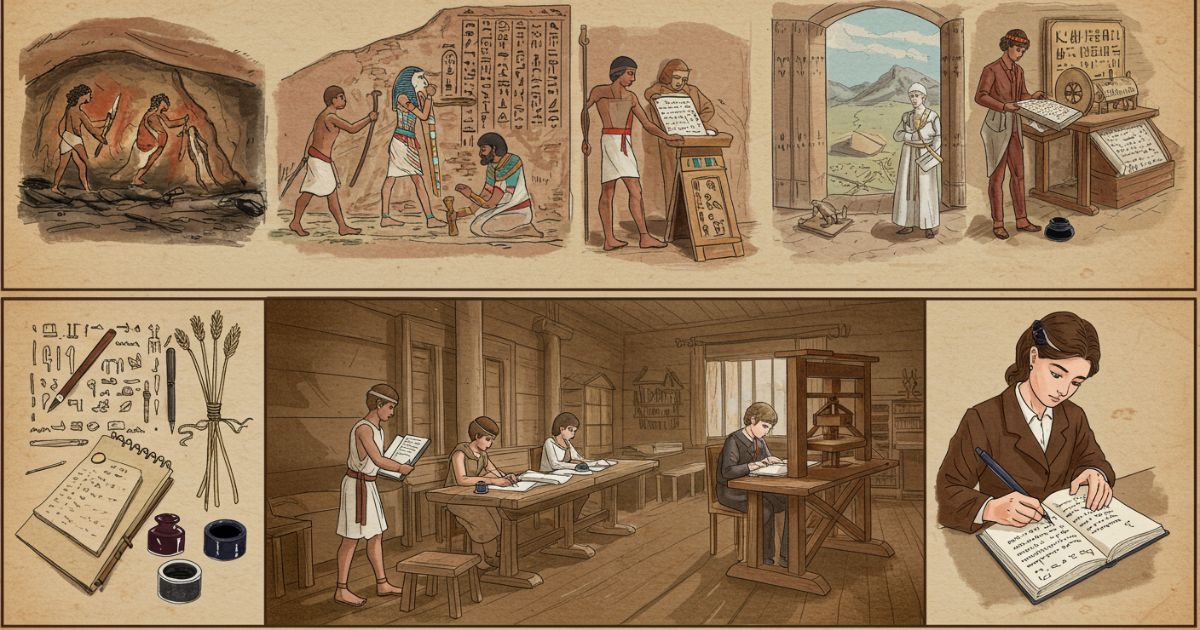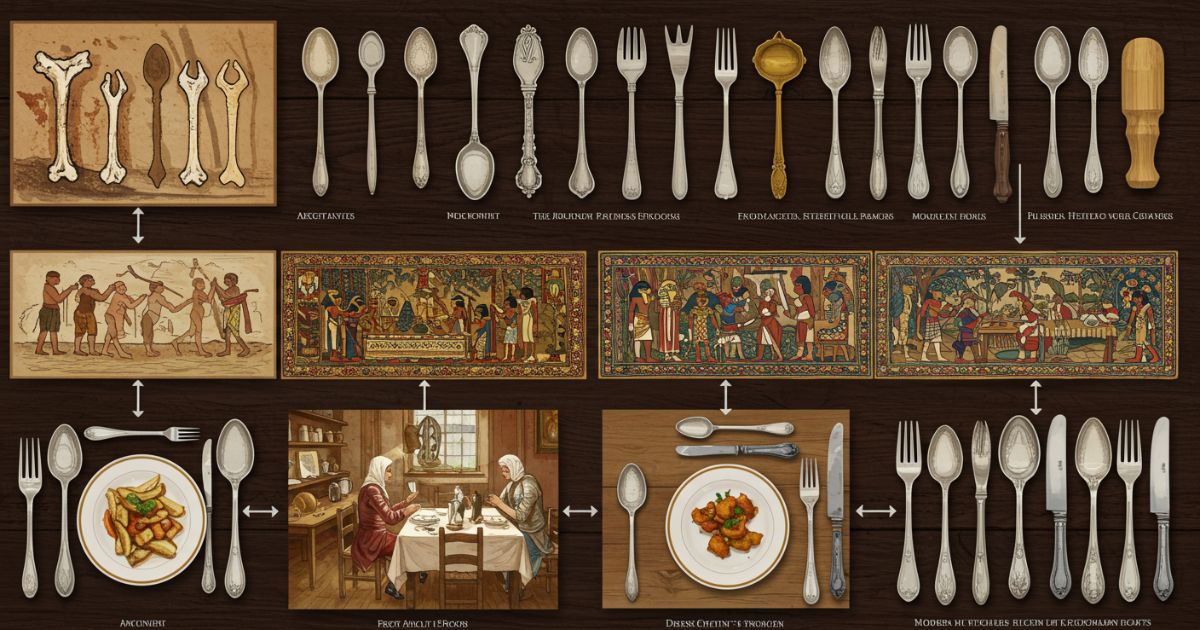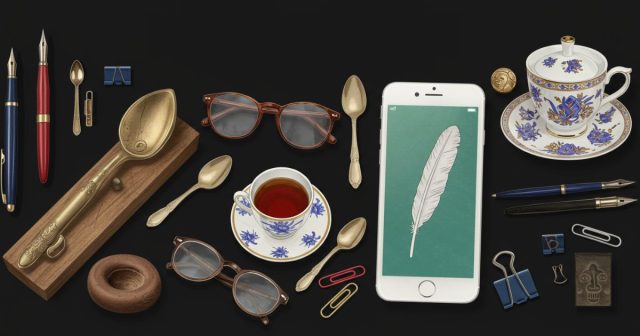The Evolution of Writing: From Quills to Ballpoint Pens
The story of the pen is a narrative of innovation. Early civilizations wrote with sharpened reeds or brushes dipped in ink. The Romans improved on this by developing metal nibs, but these were prone to corrosion and uneven ink flow. It was the quill—made from the flight feathers of large birds like geese—that dominated medieval scriptoria, offering flexibility and a finer line.

In the 19th century, metal nibs returned with renewed vigor as steel manufacturing advanced. Yet it was the invention of the fountain pen—with its reservoir for ink—that truly revolutionized writing by eliminating frequent dipping. Finally, in 1938, Hungarian-Argentinian inventor László Bíró patented the ballpoint pen, whose tiny rotating ball delivered ink smoothly and reliably. Today’s pens are disposable, refillable, gel-based, or even digital, but their lineage traces back through quills and inks to the dawn of written communication.
The Journey of Eating Utensils: From Ancient Spoons to Modern Forks
Spoons are among the oldest utensils, carved from shells and wood by prehistoric humans to scoop liquids and grains. In ancient Egypt and Greece, spoons symbolized status—crafted in precious metals and adorned with intricate engravings. Forks, by contrast, arrived later in the West. Originating in the Byzantine Empire, forks were first used for serving, not eating. They reached Italy in the 11th century, shocking diners who deemed them blasphemous tools that mimicked devilish pitchforks.

By the 17th century, forks became fashionable among European nobility, prized for their refinement and hygiene. Today, forks, knives, and spoons come in myriad designs: stainless steel for durability, plastic for convenience, and bamboo for sustainability. Each utensil reflects shifts in dining etiquette, technology, and environmental awareness.
The Story Behind Eyeglasses: From Reading Stones to Smart Glasses
Vision correction began long before optometrists. Medieval scholars used polished crystal spheres called reading stones to magnify text. In the late 13th century, Italian inventors combined these lenses with frames to create the first wearable eyeglasses, revolutionizing scholarship and trade. The earliest frames lacked temples and rested on the nose, balanced with ribbons or finger holds.
Advances in lens grinding improved clarity, while the Industrial Revolution enabled mass production. Pince-nez, monocles, and finally modern eyeglasses emerged over the next few centuries. Today, corrective lenses are complemented by blue-light filters, photochromic tints, and digital displays, giving rise to “smart glasses” that integrate cameras, GPS, and augmented reality. From simple reading stones to high-tech wearables, eyewear has consistently expanded our vision—both literally and metaphorically.
The Tale of the Teacup: Cultural Symbol and Global Trade
Tea’s origins lie in ancient China, where legend credits Emperor Shennong with discovering its stimulating properties in 2737 BCE. Initially brewed in bamboo stalks, tea drinking evolved alongside specialized vessels. Early teacups were earthenware, later replaced by delicate porcelain during the Tang and Song dynasties. Exported via the Silk Road, Chinese porcelain teacups became prized in the Middle East and Europe, fueling the global tea trade.
By the 17th century, European manufacturers in Delft, Meissen, and later Staffordshire sought to replicate and innovate on Chinese designs, giving rise to unique styles like Blue Willow and Royal Crown Derby. Today, teacups symbolize hospitality, ceremony, and even national identity—from British afternoon tea to Japanese tea ceremonies. Each sip connects drinkers to centuries of cultural exchange and artistic craftsmanship.
The Rise of Smartphones: A Modern Marvel Built on Old Innovations
Smartphones are often viewed as breakthroughs, but they stand on the shoulders of earlier technologies: the telegraph, telephone, radio, and computer. Early mobile phones in the 1980s were bulky and limited to voice calls. The shift came in the 1990s with SMS, and later with the integration of cameras, web browsers, and touchscreens—pioneered by devices like the BlackBerry and the original iPhone in 2007.
Today’s smartphones combine multiple sensors and connectivity options—GPS, accelerometers, fingerprint scanners—into ultra-thin packages. They are portable computers, cameras, wallets, and entertainment centers all in one. Behind the sleek glass and metal is a complex dance of microchips and antennas, rooted in decades of incremental progress across disciplines.
The Hidden Power of the Paper Clip: A Tiny Marvel
Often dismissed as trivial, the paper clip is a testament to transformative yet straightforward design. The most common Gem style was never patented but became ubiquitous by 1900. Its genius lies in its spring tension and seamless loop, which grips papers without tearing them. During World War II, Norwegians wore paper clips as a silent protest against Nazi occupation, symbolizing unity and resistance.
Variations abound—trombone clips, butterfly clips, and even magnetic clips—yet the basic design remains irreplaceable. In a world fixated on digital solutions, the humble paper clip reminds us that elegance and functionality often reside in the smallest details.
Conclusion: Embracing the Extraordinary in the Ordinary
Everyday objects tell extraordinary stories. From the pen nibs that traced ancient manuscripts to the humble paper clip that became a symbol of solidarity, these items chart the course of human innovation, culture, and connection. By exploring their hidden histories and everyday symbols, we gain a deeper appreciation for the objects that shape our daily lives and the minds that conceived them. Next time you pick up a spoon, strap on your glasses, or tap on your phone, remember: you’re holding a piece of history in your hand.









